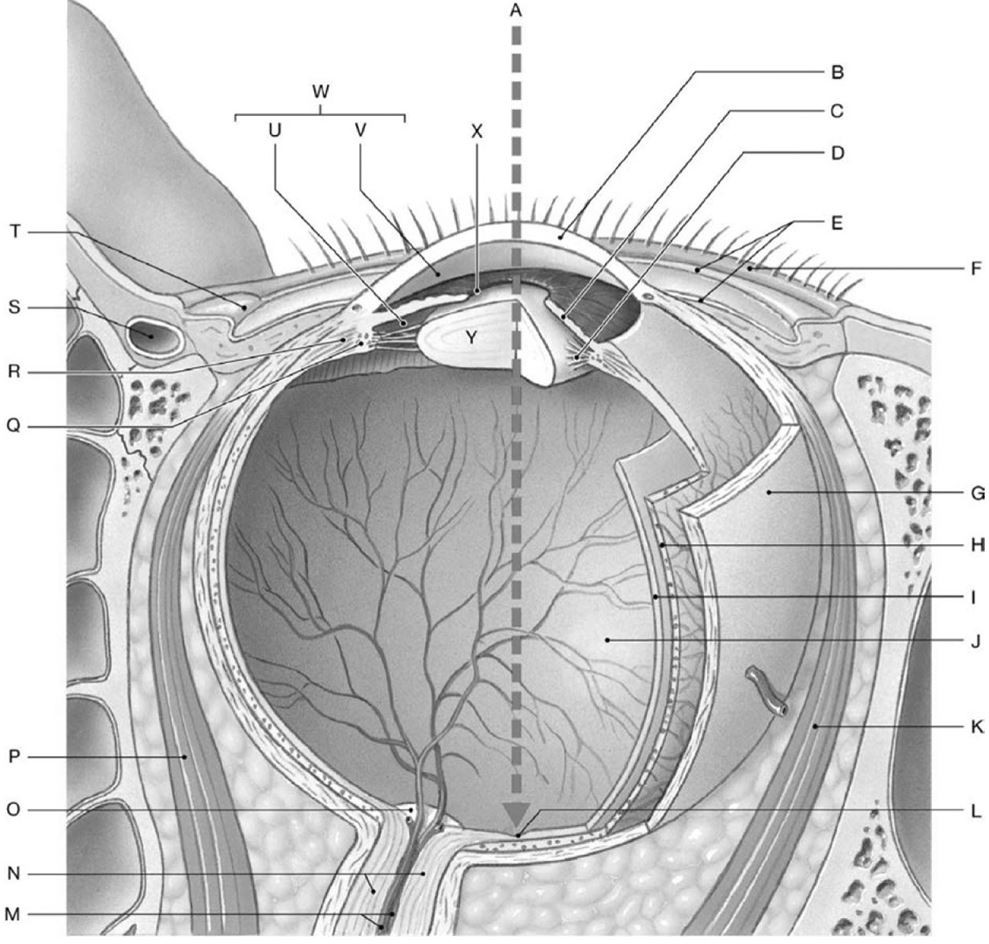Structure I is the

A) choroid.
B) sclera.
C) ciliary layer.
D) retina.
E) fovea.
D) retina.
You might also like to view...
DNA replication is said to be semiconservative because One of each of the daughter strands is newly synthesized, and the other is from the original DNA molecule One of the daughter cells will receive a newly synthesized double helix, and the other will receive the old double helix Each of the daughter cells will receive DNA molecules with some genes from the old strand and other genes from the new strand
What will be an ideal response?
In a female pig, the urethra, and the vagina unite to form the ________
A) urogenital sinus B) urogenital orifice C) genital papilla D) vulva
Shannon was the pitcher on her softball team. During one game, a batter hit the ball and it ricocheted off the left side of Shannon's head, knocking her temporarily unconscious. She eventually regained consciousness, but experienced severe pain near her left temple. Within a few hours, Shannon had trouble moving her right upper limb and became lethargic. Her team captain brought her to the emergency room, where the physician diagnosed her with an epidural hematoma. Why did Shannon experience the problems with her right upper limb? The hematoma likely was impinging on what brain structure?
a. left precentral gyrus b. left postcentral gyrus c. left cerebral nuclei d. left cerebellum
Why does breathing continue to be rapid and deep for a time after heavy exercise?
A. Extra oxygen is needed to eliminate lactic acid and restore muscle creatine phosphate and glucose concentrations. B. The respiratory system is slow to increase and decrease its function before and after exercise, which is why it takes awhile for breathing to slow down. C. Lactic acid that builds up during heavy exercise must be exhaled into the air, so heavy breathing must continue for awhile after exercise to eliminate it. D. The ATP level in muscle cells falls drastically during heavy exercise, and extra oxygen is needed to restore it. E. The extra ventilation is not needed to replenish energy stores in muscle fibers, but rather simply to restore the blood pH to normal after the production of excess lactic acid during the exercise.